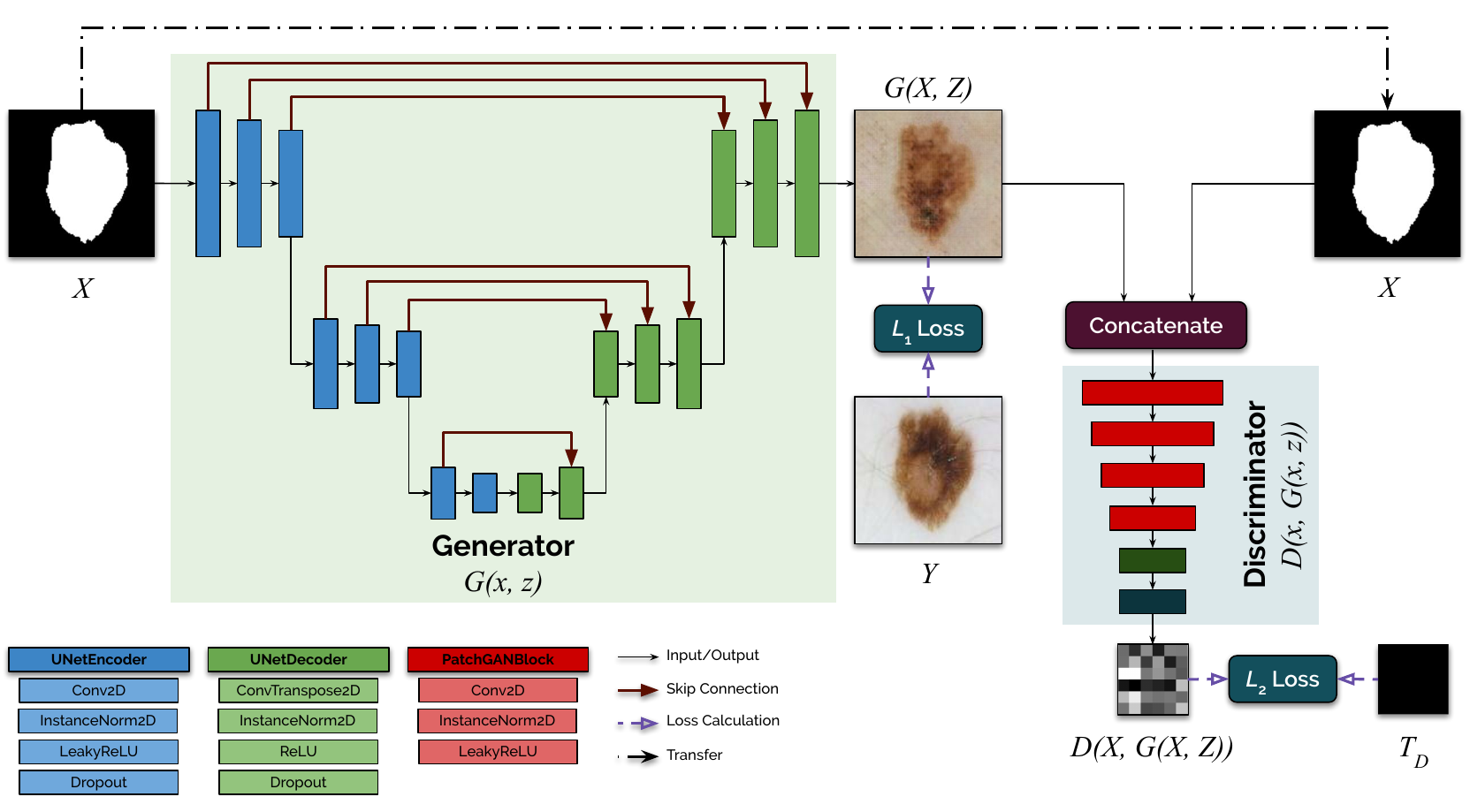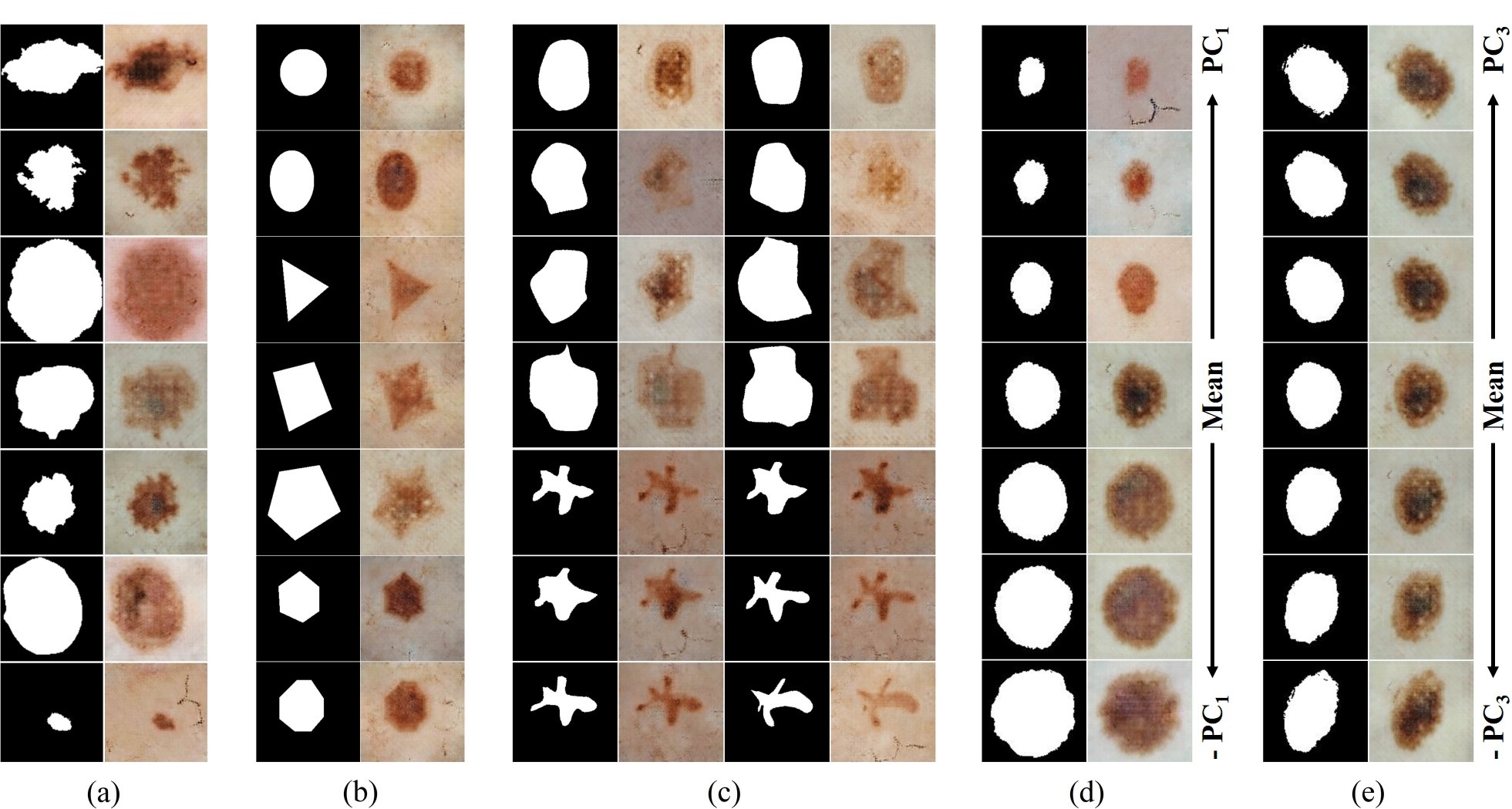This repository provides the code and the model weights for our MICCAI SASHIMI 2019 paper: Mask2Lesion, a GAN-based paired image translation approach for synthesizing skin lesion images from binary segmentation masks. If you use our code, please cite our papers:
[1] Kumar Abhishek, Ghassan Hamarneh, "Mask2Lesion: Mask-Constrained Adversarial Skin Lesion Image Synthesis", International Conference on Medical Image Computing and Computer-Assisted Intervention (MICCAI) Workshop on Simulation and Synthesis in Medical Imaging (SASHIMI), 2019.
[2] Kumar Abhishek, "Input Space Augmentation for Skin Lesion Segmentation in Dermoscopic Images", Diss. Applied Sciences: School of Computing Science, 2020.
The corresponding bibtex entries are:
@InProceedings{Abhishek_2020_CVPRW,
author = {Abhishek, Kumar and Hamarneh, Ghassan},
title = {Mask2Lesion: Mask-Constrained Adversarial Skin Lesion Image Synthesis},
booktitle = {International Conference on Medical Image Computing
and Computer-Assisted Intervention (MICCAI) Workshop on Simulation and Synthesis in Medical Imaging (SASHIMI)},
pages={71--80},
month = {June},
year = {2019}
}
@mastersthesis{Abhishek2020Input,
author={Abhishek, Kumar},
title={Input Space Augmentation for Skin Lesion Segmentation in Dermoscopic Images},
school={Applied Sciences: School of Computing Science}
year={2020},
}
This code uses affinelayer's pix2pix-tensorflow @ 0f21744 and junyanz's pytorch-CycleGAN-and-pix2pix @ 0442670. The former (TensorFlow implementation) is only used to prepare the data in the pix2pix image translation format (since the dataset creation functionality was not available in the PyTorch implementation at that time), and therefore only tools/process.py is used. The GAN training and inference relies on the PyTorch implementation.
Since this is a paired image translation task, we need skin lesion image-lesion segmentation mask pairs.
(uses tools/process.py from pix2pix-tensorflow @ 0f21744)
CUDA_VISIBLE_DEVICES="0" python process.py --b_dir <SKIN_LESION_IMAGES_DIR> --input_dir <SKIN_LESION_SEGMENTATION_MASKS_DIR> --operation combine --output_dir <CREATED_DATASET_STORAGE_DIR>
(uses junyanz's pytorch-CycleGAN-and-pix2pix @ 0442670)
python train.py --dataroot <Mask2Lesion_DATASET_DIR> --name Mask2Lesion --model pix2pix --direction AtoB --gpu_ids 0 --display_id 0 --norm instance
python test.py --dataroot <Mask2Lesion_DATASET_DIR> --name Mask2Lesion --model pix2pix --direction AtoB --gpu_ids 0 --num_test 1000
(a) Segmentation masks from the ISIC dataset fed to Mask2Lesion and the corresponding generated lesion images.
(b) Simple geometric shapes as masks and the corresponding outputs.
(c) Elastic deformations applied to hand drawn masks using DeformIt and the corresponding synthesized lesion images.
(d),(e) PCA-based deformations applied to segmentation masks and the corresponding Mask2Lesion outputs.
The model training details are provided in [2] in Chapter 2, Section 2.3 on page 25. The model weights are available on Google Drive for inference. Please download them and place them in pytorch-CycleGAN-and-pix2pix/checkpoints/Mask2Lesion/.

